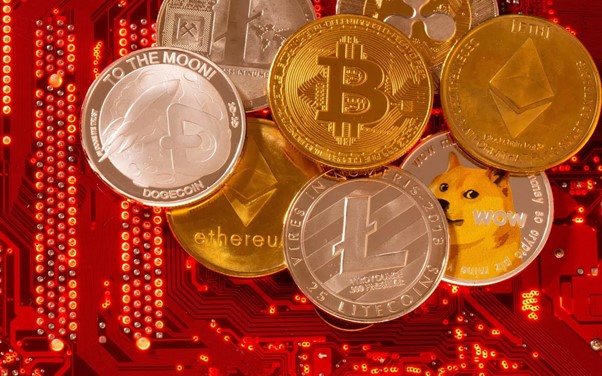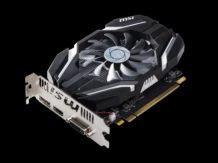In the past couple of years, blockchain technologies, cryptocurrencies, and non- fungible tokens have been taking over the online world, and unless you have been offline for the last few months, you’ve probably heard something about
them.
These technologies are currently one of the hottest trends worldwide, and what initially seemed like a trend that would only be applied in the financial sector, is actually being used as a powerful tool to decentralize various
industries and markets, resulting in complete overhauls and paving the way for new forms of investment and even entertainment.
One of the industries that benefited the most is online gaming, and ever since their emergence, blockchains and cryptocurrencies have been revolutionizing the way we play games online.
From blockchain gaming to betting with cryptos, these technologies have been responsible for opening up a whole new world of opportunities to gamers and punters, and even to developers and iGaming operators, who were quick to grasp the true potential of blockchains.
In this article, we present the basic concepts of blockchains, cryptos and non- fungible tokens, as well as the key aspects behind blockchain gaming, and the quick emergence of cryptocurrencies in the iGaming industry. So, before we dive into all the possibilities ahead of us, let’s take a look at how these technologies were created and introduced.

Despite the fact that digital currencies have been proposed since the 1980s, when American developer David Chaum designed an anonymous cryptographic electronic currency, they didn’t become completely functioning until the late 2000s.
Several digital currencies were proposed in the 1980s and 1990s, and even the NSA published some research on the subject, but they all encountered the same difficulty: the double-expenditure problem.
In 2009, however, a group of unidentified programmers working under the pseudonym Satoshi Nakamoto developed what would become the world’s first blockchain, with the main goal of using it as a public ledger for the currency they had created, therefore solving the double-expenditure problem.
“But what exactly is a blockchain?”, you might ask. A blockchain is a sequence of records called blocks, and each block contains data from the previous blocks, timestamps, and cryptographic hashes that provide proof-of-work, and are almost impossible to be tampered or hacked. With the creation of the blockchain, the same group of programmers was able to develop Bitcoin, the world’s first functioning decentralized cryptocurrency.
From then on, numerous other cryptocurrencies, such as Litecoin, Ether, and Binance Coin, were created, utilizing the same blockchain technology. These altcoins differ from Bitcoin in several ways, including processing time, smart contract functionality, and varying levels of decentralization. For example, while Litecoin offers faster transactions, the Ethereum blockchain allows applications and smart contracts to be run on it.
Then we get to NFTs, or non-fungible tokens. In essence, NFTs are non-interchangeable units of data on a blockchain, representing a unique digital item – pieces of digital art, videos, songs, and even items in video games. Through smart contracts, non-fungible tokens provide buyers with proof of ownership, while keeping creative rights being bound to their creators. Apart from that, NFTs must be irreplaceable and unique, thus creating scarcity, the basic concept for non-fungible assets.
The majority of NFTs is based on the Ethereum blockchain and uses its ERC utility tokens, which are specialized token standards. Transaction history, artist information, serial numbers, and the smart contract are all included in these tokens. NFTs can be bought and sold in specific decentralized marketplaces, such as Nifty Gateway and Open Sea.
Cryptos in iGaming

One of the most fascinating aspects of the iGaming industry is that its operators are continuously pushing for innovations, and closely following the current technological trends in order to deliver a genuine experience to bettors playing from home.
Unarguably, one of the main reasons behind the quick emergence of cryptocurrencies in the iGaming industry is the security aspect, since cryptos are regarded as one of the most secure ways of conducting financial transactions online. Given no banking institutions or governing agencies are involved in the operation of these blockchains, due to their decentralized structure, transactions made with cryptos can’t be monitored or tracked, and personally identifiable information is secure.
Faster transactions are also a key aspect of betting with cryptos, as deposits and withdrawals using fiat currencies and other banking methods can take up to a week to be processed and made available to players. However, according to specialists, in online casinos with Bitcoin and other cryptocurrencies, funds are made available instantly, and players just need to wait for the platforms to confirm the transaction.
Besides, withdrawals using cryptocurrencies have cheaper fees and taxes associated with them. Since banks and regulatory authorities are not engaged, all third-party activities, such as taxes and fees, are reduced, resulting in lower total transaction costs.
As blockchain technologies advance, the future of cryptos in the iGaming sector seems certain, and the crypto betting market is likely to grow steadily in the coming years.
Blockchain gaming

Blockchain gaming was first proposed in the mid-2010s, but could only be achieved with the improvement of blockchains, and the introduction of smart contracts. In 2017, the first crypto game was created: CryptoKitties, a game in which players collect, breed, trade, and sell virtual cats.
Due to a limitation of processing time in these blockchain, the first generation of blockchain games had their gameplay mostly centered on collectible assets making use of non-fungible tokens, like CryptoKitties’ cats, virtual monsters and other creatures, and trading cards. In the past couple of years, however, developers became able to create innovative gaming experiences, featuring more intricate gameplays, including diverse genres such as adventure and role-playing games. But one key principle remains the same: decentralized control.
Decentralization is undeniably the most exciting aspect of blockchain gaming, as it gives us players something that we want for a long time: finally being rewarded for all the time and effort invested into gaming with more than just in-game assets. Developers are now able to offer play-to-earn and content monetization features, through which players can truly own a share of the game and monetize all content created, at last having the opportunity of profiting from gaming.















